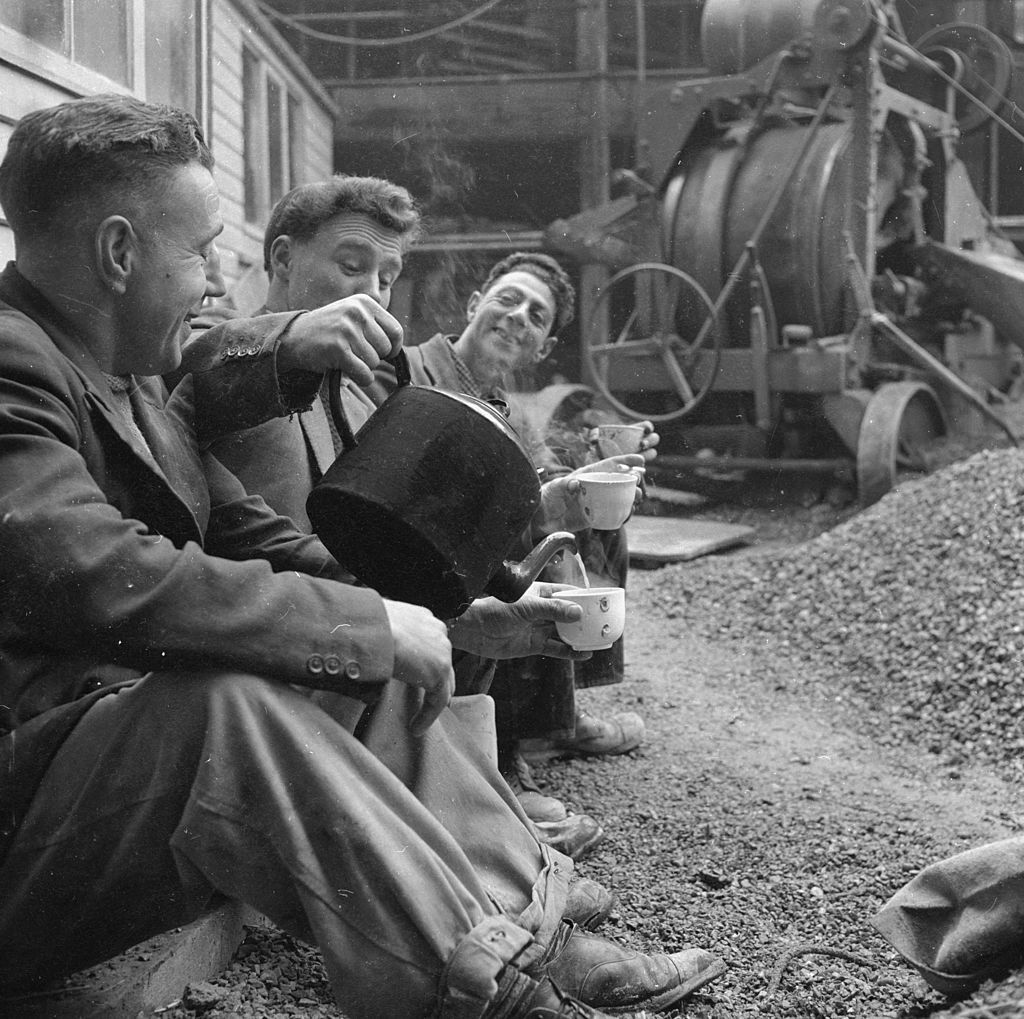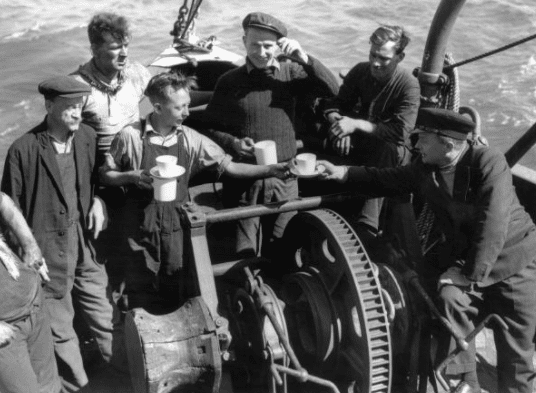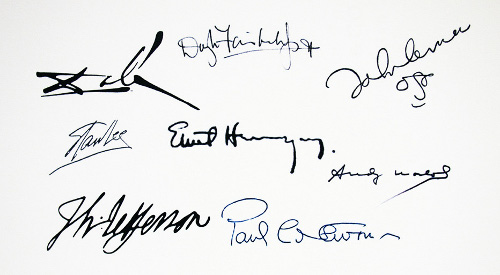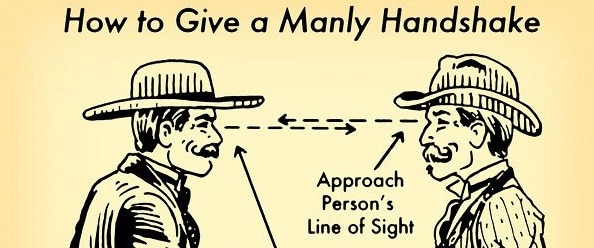Editor’s note: This is a guest post from Tim Ludy.
“There are those who love to get dirty and fix things. They drink coffee at dawn, beer after work. And those who stay clean, just appreciate things. At breakfast they have milk and juice at night. There are those who do both, they drink tea.” –Gary Snyder
When you think of tea parties, you’re probably getting an image of a group of women sitting around a table drinking out of delicate tea cups while eating fancy cookies. There’s probably a doily somewhere in the picture too.
For most Americans, this is what comes to mind. How could this be? After all, the American Revolution began with one of the manliest tea parties in history.
Despite the notion that “real men don’t drink tea,” the drink is readily consumed by both sexes around the world, making it second only to water in popularity. Tea not only has a long and surprisingly manly history, but its health benefits continue to make it a wise (and tasty) choice for modern men.
If you’ve yet to really give tea a chance, today I’ll briefly go through its history, offer a rundown of its salutary effects, and then present a primer on tea types and how best to consume and make this storied drink.
Tea’s Manly History
Tea originates in Asia where tea plants naturally grow. Men in China, Japan, and India have been brewing tea for thousands of years while reaping its health benefits and also enjoying it as a tasty beverage.
In Japan, tea became a major part of samurai culture with the development of the Chanoyu tea ceremony, or “way of the tea.” In the 16th century, warlord Oda Nobunaga kept several tea masters in his company and gave valuable tea items to his generals as rewards. His successor, Toyotomi Hideyoshi, would use the tea ceremony to discuss matters of state and made it a key part of his administration.
The Dutch merchant and adventurer, Jan Huyghen van Linschoten, described the Chanoyu in his account of his travels through Asia:
“The earthen cups which they drinke it in, they esteeme of them as much as we doe of Diamants, Rubies and other precious stones, and they are not esteemed for their newness, but for their oldness, and for that they are made by a good workman.”
Linschoten ended up playing a large part in tea’s worldwide domination. He spent five years working for the Archbishop of Goa to steal Portugal’s secret trade routes to the East. This theft broke a major trade monopoly and made goods like tea more available to other European traders.

While American GIs preferred coffee in the trenches, British soldiers and airmen fueled their fighting with tea.
Tea quickly rose in popularity once it was introduced in Europe — even among most military men. In World War II, the British even invented a built-in kettle for armored vehicles so their tank crews wouldn’t have to expose themselves outdoors whenever they wanted a cup of tea. As an interesting aside, during the Victorian era, mustaches were extremely popular and the British military required its soldiers to sport them for many years. This led to the invention of the Mustache Cup, which allowed mustachioed men to drink hot tea without the steam melting their mustache wax or staining their facial hair.
Because tea was so popular in Britain, it was only natural that the drink was also popular in the American colonies. That is, until the British passed the Tea Act of 1773, which gave the East India Company a monopoly on American tea trade. Seeing this as the latest example of the British violating their rights, the Sons of Liberty dumped $18,000 worth of tea into the Boston Harbor. This set off the series of events that would lead to the American Revolution…as well as the decrease in tea’s popularity in the U.S.
Unfortunately, that means many American men have been missing out on the benefits of tea for centuries.
The Health Benefits of Tea
The history and culture surrounding tea is interesting, but is that why you should try the beverage? One of the things that takes it from a novelty to something seriously worth considering are the health benefits. This is a primary reason the drink has grown in popularity in recent years. Tea drinking in the U.S. has in fact seen a dramatic increase since the turn of the millennium.
Tea is rich in antioxidants, called polyphenols, that help regulate blood pressure, body fat, liver function, and other bodily functions. Here are some of the specific health benefits of tea:
- Reduces risk of heart disease: Researchers have found the more tea men drank, the less likely they were to die from heart disease, stroke, or respiratory disease. If you’re looking to prevent the negative effects of cholesterol, the antioxidants in tea can help improve the flexibility of blood vessels, reduce cholesterol, and decrease the chances of a stroke by as much as 50%.
- Increases weight loss: Most of the fat-burning supplements on the market today include tea as one of their ingredients. Tea is proven to boost metabolism, promote the release of fat into the bloodstream to be used as energy, and increase the burning of fat during exercise. It’s also a great, zero-calorie drink to help you cut out sugary beverages like soda and curb hunger between meals.
- Improves skin health: If you’re like most men, you probably don’t think too much about your skin, but tending to the health of your hide improves both its attractiveness and its protective qualities. The antioxidants in tea make your skin more resistant to ultraviolet radiation, reducing wrinkles and the risk of skin cancer. If you suffer from the occasional acne outbreak, tea has been proven to stop its three major causes: blocked pores, hair follicle inflammation, and growth of bacteria.
- Enhances memory: Staying sharp as you age should be a top priority for any man. Tea inhibits the activity of enzymes which can break down neurotransmitters and create protein deposits that can lead to Alzheimer’s and dementia. Researchers also believe tea can boost the memory of healthy, everyday drinkers.
- Promotes sleep: There are many “bedtime teas” on the market and millions of people use tea to help them fall asleep. But here’s the thing: there isn’t actually any scientific evidence proving the sedative effects of tea. Even if the ingredients themselves don’t induce slumber, however, the ritual itself certainly seems to. Perhaps it is simply the act of having a routine to signal your body it’s time for sleep or the overall relaxing effect of enjoying a warm beverage. Whatever the cause, it works for many people, including myself, and it’s worth a try if you have issues getting to bed at night.
- Reduces risk of cancer: The Mayo Clinic found that men who drink more than five cups of tea every day have a lower risk of developing prostate cancer. The ingredients in tea reduce many kinds of cancer by helping inhibit tumorigenesis at different organ sites, modulate immune system function, and scavenge for free radicals.
Tea vs. Coffee
Even if tea sounds like a great drink, many of you already have a hot beverage that is deeply ingrained in your daily routine. Though tea is much more widely consumed globally, in North and South America, coffee is indisputably king.
But even if you’re already very attached to your mug of joe, I’d argue that there’s room on a man’s table and office desk for a cup of tea as well. You don’t need to choose one over the other — there are benefits to both, and reasons to consider sometimes swapping coffee for tea.
The biggest difference between the two (other than their taste, of course) is the caffeine content. Tea has less caffeine than coffee (24-40 mg per cup compared to 100-200 mg). The polyphenols in tea also cause your body to absorb the caffeine over a longer period of time so you’re less likely to suffer a crash. You can even decaffeinate tea by steeping the leaves once, dumping out this initial steep, and then re-steeping. This removes about 75% of the caffeine.
If you’re looking to limit your caffeine consumption, consider switching over to tea after your morning cup of coffee instead of turning to a second cup later in the day (which can cause sleep problems).
The other reason men lean towards coffee is the belief that it offers a stronger, bolder taste. In truth, it all depends on what kind of tea you choose. Many types of tea offer an even stronger, richer flavor than coffee…
Different Types of Tea
“There are a thousand and ten thousand teas.” –Lu Yu, The Classic of Tea, the first known monograph on tea in the world
“But I’ve tried tea, I just don’t like the taste.” This was my thinking for most of my non-tea-drinking life. I had tried tea a few times and it was always too flowery for my tastes. Then I learned that what I had tried wasn’t actually tea at all!
There is a common misuse of the word tea to refer to any beverage blending herbs or leaves with water. “Tea” actually refers to a specific beverage infused from the tea bush, Camellia sinensis. This includes green tea, black tea, oolong, white tea, and pu-erh. “Herbal teas,” more accurately called herbal infusions or herbal tisanes, include various flowers, herbs, spices, and fruits.
Tisanes have their own health benefits and are enjoyed by many people, but they are not strictly considered tea. They’re also not really for me. If you’ve only ever tried your mother’s chamomile, you may think tea isn’t for you either.
In contrast, Camellia sinensis offers a richer variety of flavors and styles that may appeal more to a man’s taste buds. Despite only coming from a single type of plant, there are still many varieties. In fact, there are more kinds of tea in China alone than there are wines in France. This variety comes from how the tea leaf is manufactured. I won’t dive too deeply into the manufacturing process (check out The Story of Tea by Mary Lou Heiss and Robert J. Heiss if you’re interested), but in terms of taste, here’s how the six tea classifications differ:
- Green Tea: The oldest and most popular type of tea, green tea has a pale color and a sharp flavor. Most studies into the health benefits of tea cite this variety. Caffeine content generally ranges from 8-36 mg.
- White Tea: An unfermented, uncured green tea, white tea retains the most health benefits because of its simple manufacturing process. This tea is lighter in color and flavor than green. Caffeine content generally ranges from 6-25 mg.
- Yellow Tea: Also known as “fresh tea” because the leaves are dried naturally, yellow tea has a similar flavor to green and white tea. Caffeine content generally puts yellow tea somewhere between green and black tea, at around 33 mg.
- Black Tea: Next to green, black tea is the second most popular tea category. Its manufacture creates a darker, red-colored tea with a more robust flavor. Many “breakfast teas” (like Earl Grey) include black tea because the caffeine content ranges higher (from 23-110 mg).
- Oolong Tea: A blend of green and black tea, oolong tea offers some of the most complex flavors and retains many of the health benefits of green tea. Its caffeine content ranges from 12-55 mg.
- Pu-erh Tea: The most unique tea on this list, Pu-erh is usually compressed (or bricked) and offers a richer, earthier flavor. Like wine, this type of tea actually becomes more complex as it ages. Admittedly, it’s a bit of an acquired taste. The first cup was a little too earthy for me, but by the fourth or fifth (pu-erh encourages multiple steepings — more on this later) I was really enjoying the flavors. It contains 30-70 mg of caffeine.
Within each of these classes of teas there are many different styles. Extra flavors can be added, manufacturers can add variations to their process, and several types of tea can even be blended to create unique flavors. Here are some specific varieties that men find particularly appealing for their rich, bold flavor:
- Gunpowder Green Tea: Named for its stronger caffeine content, gunpowder tea is a simple, strong green tea that offers a great introduction to the beverage.
- Lapsong Souchong: Winston Churchill’s tea of choice, this black tea has a strong, smoky flavor similar to a cigar or single malt Scotch (also favorites of the British Bulldog).
- Assam Kama Black: This Indian tea is a great substitute for coffee because of its dark color, nutty aroma, and robust, malty flavor.
- Genmaicha: Also known as “brown rice tea” or “popcorn tea,” this blend combines green tea with roasted brown rice. This full-bodied tea combines the fresh flavor of a green tea with the roasted, nutty flavor of the rice.
- Tanzania CTC: A fully oxidized black tea, this African tea contains maltiness similar to the Assam, but with a lighter, nuttier finish.
- Dong Ding Oolong: This Taiwanese oolong tea offers a good middle ground between a darker black tea and a lighter green. Using a medium roast it achieves a nutty, roasted taste and a less fruity aroma than some lighter oolongs.
So where should you start? Everyone’s tastes are different. You may prefer a darker black tea, a lighter green tea, or the earthy taste of pu-erh. Personally, my favorite is oolong because it offers a crisp and complex taste that isn’t too dark or too light. I learned this by starting my tea journey with a sampler pack. Many tea shops and retailers sell sample packs that offer small tins of a few different types of tea to help you decide what your personal preferences are.
How to Brew a Great Cup of Tea
Hopefully tea is starting to sound like a pretty appealing beverage with its great health benefits and rich variety of flavors. What’s not to love? The last barrier to taking the plunge might be the feeling that tea is too complicated or time-consuming to brew.
Truthfully, brewing the “perfect” cup of tea takes gram scales, water filtration devices, and a lot of patience. If that’s a goal you want to chase, it does make for a fun journey. If you are just a casual tea drinker, though, all you need is hot water, tea leaves, and something to mix the two.
You can get a tasty beverage by simply picking up tea bags at your local supermarket and following the instructions on the box (that’s how I first began drinking tea regularly). However, with a few basic standards you can get a truly great cup of tea without spending too much time or energy. Here are some simple considerations:
Tea Bags vs. Loose Leaf
Tea bags offer a more convenient way to steep a cup of tea, but the quality you’ll receive is usually much lower. Most tea bags contain the dust, fannings, and twigs from broken tea leaves rather than the full leaves themselves. This results in a more bitter tea. These leaves are also not usually as fresh as the tea you can get by buying loose leaf. To release their full flavor and aroma, tea leaves need room to expand and unfurl. Tea bags collapse on the leaves and prevent this expansion.
Most of the tools necessary to brew a cup of tea with loose leaves are inexpensive and you can quickly begin saving money by switching.
Tools of the Trade
“If you have one pot and can make your tea in it that will do quite well. How much does he lack himself who must have a lot of things.” –Sen Rikyu, Japanese tea master
There are several ways to steep loose leaves depending on your preference. Tea aficionados will warn you to stay away from tea-balls unless you are drinking a very finely cut black tea because they constrict the tea leaves just like a tea bag. Instead, use a teapot, tea glass, or larger leaf-containing device to allow the water to circulate around and infuse the leaf. Teapots and tea glasses will have a strainer to allow you to pour your tea into a cup and keep the leaves separate to either re-steep or discard. A leaf-containing device like a stainless-steel basket is placed inside your teacup and then removed when you are done steeping.
Brew Times and Temperatures
The last thing to consider when brewing your tea is the temperature of the water you are using and how long you will steep the leaves for. Each type of tea will have its own recommended temperature and steeping time. Look for information from the vendor for exactly how they recommend their tea be brewed. Although there are exceptions, these are the general guidelines (notice these are all less than boiling temperature — either let your boiling water sit for a couple minutes, or get a kettle which allows for more temperature control):
- White Tea: 160-170 degrees, steep for 1.5-2 minutes
- Green Tea: 170-180 degrees, steep for 2-3 minutes
- Oolong Tea: 180-200 degrees, steep for 1.5-2 minutes
- Black Tea: 190-200 degrees, steep for 3-4 minutes
- Pu-erh: 200-212 degrees, steep for 2-5 minutes
White, green and oolong tea can all be steeped 2-3 times using the same leaves. Pu-erh tea leaves can be steeped 6-8 times. Simply save the leaves in your teapot, glass, or basket and add new water.
No matter how you brew it, tea is more than just an enjoyable beverage with many health benefits. It’s a manly tradition and a large part of human culture going back thousands of years. Brew yourself a cup and start enjoying the many benefits today!
_______________________________________________
Tim Ludy is a writer and content strategist for marketing and technology companies. He is the owner of Monomyth Marketing, a marketing agency focused on creating online content and helping brands tell their story.
Sources:
The Story of Tea: A Cultural History and Drinking Guide













